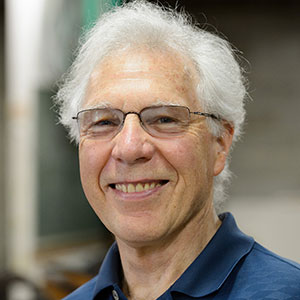
Andrew Black
Professor, Applied Biology
604–822–2730
MacMillan 135, 2357 Main Mall
I have worked at UBC since 1969, when I joined the Department of Soil Science as a biometeorologist. I received my Ph.D. degree that year from the University of Wisconsin. I was fortunate to work there as a graduate student in Dr. Champ Tanner’s agrometeorology/soil physics group. Champ stressed the importance of using first principles and the ability to design and build agrometeorological instrumentation. While I was there I worked on net radiometers, infrared thermometry, lysimetry, Bowen ratio apparatus and eddy correlation sensors. I also worked closely with Wilford Gardner on drainage and evaporation in bare soils. While at UBC the emphasis of my research has been the energy and water balance of forests. For many years I’ve also had an interest in plant water relations. More recently I have become extremely interested measuring forest–atmosphere CO2 exchange (even on a long-term basis which may be foolish) and in trying to understand the processes controlling the carbon balance of forests.
Project details available on the Biomet – Biometeorology & Soil Physics Group of UBC website.
Musavi, T., Migliavacca, M., Reichstein, M., Kattge, J., Wirth, C., Black, T.A., Janssens, I., Knohl, A., Loustau, D., Roupsard, O., Varlagin, A., Rambal, S., Cescatti, A., Gianelle, D., Kondo, H., Tamrakar, R., Mahecha, M.D. 2017. Stand age and species richness dampen the interannual variation of ecosystem-level photosynthetic capacity. Nature Ecology and Evolution, 1: 0048. doi:10.1038/s41559-016-0048.
Meyer, G1., Black, T.A., Jassal, R.S, Nesic, Z., Grant, N., Spittlehouse, D., Fredeen, A.L., Christen, A., Coops, N., Foord, V.N., Bowler, R. 2017. Measurements and simulations using the 3-PG model of the water balance and water use efficiency of a lodgepole pine stand following mountain pine beetle attack. Forest Ecology and Management 393, 89–104.
Hawthorne, I1., Johnson, M.J., Jassal, R.S., Black, T.A., Grant, N.J., Smukler, S.M., 2017. Application of biochar and nitrogen influences fluxes of CO2, CH4 and N2O in a forest soil. Journal of Environmental Management 192, 203-214.
Thiel, B., Krzic, M., Gerge, S., Terpsma, C., Black, T.A., Jassal, R.S., Smukler, S.M. 2016. A comparison of CO2, N2O, and CH4 fluxes from production fields with planted and remnant hedgerows in the Fraser River Delta of British Columbia. Agroforestry Systems, doi 10.1007/s10457-016-9990-3.
Zhou, Y., Wu, X., Ju, W., Chen, J.M., Wang, S., Wang, H., Yuan, W., Black, T.A., Jassal, R.S. et al. 2016a. Global parameterization and validation of a two-leaf light use efficiency model for predicting gross primary production across FLUXNET sites. Journal of Geophysical Research – Biogeosciences, 121, 1045-1072, DOI: 10.1002/2014JG002876.
Tagged with: Applied Biology, Faculty, Soil Science, Sustainable Agriculture and Environment